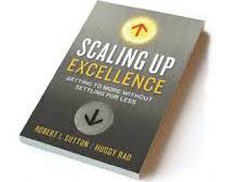| I was recently asked to read the pages of Barry Schwartz and Kenneth Sharpe's book, Practical Wisdom: The Right Way to Do the Right Thing that are available free on Amazon via the site's Look Inside function |
|
0 Comments
 There is a trend to identify individual character traits through surveys, then assume the survey results will bestow one with game-changing insight about their ability to lead. Businesses have been built on this idea. Far too much credit has been given to it. In considering the impact of an individual’s learning style on their ability to lead change, it’s important to remember that each of the styles indicated in this survey - Pragmatist, Activist, Reflector, and Theorist - is a spectrum, and one’s tendency towards one does not exclude tendencies in another; it is entirely possible that an individual is both a pragmatist and reflector, or a theorist and an activist, or some combination of all three, or all four. In his book, End of Average (2016) Harvard’s Todd Rose describes these sorts of character classifications as largely situational. For example, where an individual might be outgoing with colleagues in a work environment, they may be introverts in other social settings. While not identical, the learning styles described by Honey and Mumford (1992) are similar; an individual may be more reflective in one situation and more pragmatic in others. The spectral and situational natures of learning styles and personalities aligns well with the principles described by Laurence Peter and Raymond Hull (1969) in their work, the Peter Principle. Peter and Hull describe how the selection of candidates for promotion is based on their abilities in a particular role, and those selecting assume that those characteristics will transfer into new and higher roles. However, as situations and responsibilities change, an individual’s approach to those situations often changes as well. Consequently, individuals often are promoted until they reach a level at which they are incompetent. This is a scary thought. Attributes which made one successful in a particular scenario may make one less successful in another. In trying to lead change in education, one must consider their own style in approaching problems. Are we pragmatic, are an activist, a theorist, or reflective? To what extent, and in what situations, and in which situations will tendencies be useful? An activist, for example may be particularly adept at leading a charge, getting a project started, and able to garnering enthusiasm. They may be willing to move forward in the midst of great diversity and great uncertainty. Consequently, a leader who is an activist may be very successful in adverse situations, where obstacles seem insurmountable, and where building consensus around an idea is key. Activists contrast theorists who tend to like well organized strategies. Theorists want to examine an issue thoroughly before proceeding. As a result, theorists may find more success in situations where time is less of an issue, and where consequences of small mistakes are high. Pragmatists - people who like to get on with what works and are keen to solve problems - may be particularly adept leaders in situations where incremental changes are preferable to monumental initiatives. But if one’s tendencies towards these styles is situational, then perhaps a tendency towards the last of the four - reflector - is most important. A reflector prefers to observe and think prior to acting. They consider their own experiences and the experiences of others, and caution is important. The tendency towards reflection, allows leaders to gauge not only the skills and validity of others in approaching a problem, but - importantly - their own. An individual seeking to be a change leader in education should rightly consider the ways and extent to which they are an activist, theorist, or pragmatist. But we should all be seeking to strengthen our leadership as reflectors, as ones who carefully consider data, enjoy learning from observing others, and seeing the big picture. In being a reflector, one might be more inclined to recognize in oneself the spectral and situational nature of their own styles and avoid assuming their competence to tackle a problem based on their success in tackling a previous one. A reflector, then, may also be more inclined to let others take the lead when it is most appropriate for them to do so. In a break with the Peter Principle, a leader who is a reflector may remain in a position of competence - rather than being promoted to a level of incompetence - because they rightly recognize the personal traits which made them successful in one position may not translate well into another. References: Honey, P., & Mumford, A. (1992). The manual of learning styles, 3rd. Maidenhead: Peter Honey. Rose, T. (2016). The end of average: How to succeed in a world that values sameness. Penguin UK. Peter, L. J., & Hull, R. (1969). The peter principle (No. Book). London: Souvenir Press.
Sutton, R.I. and Rao, H. (2014). Scaling up excellence: Getting to more without settling for less. London, UK: Penguin Random House. |



 RSS Feed
RSS Feed